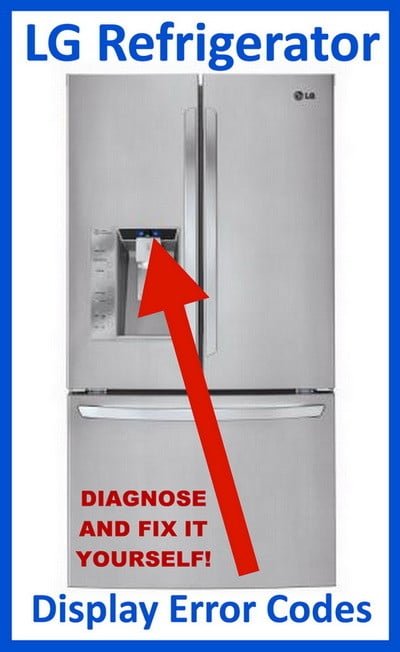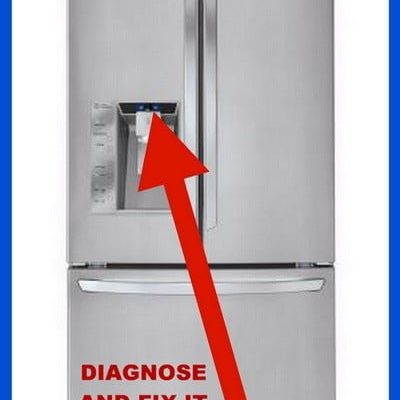
Understanding a problem is the first step toward finding a solution, and living with a fridge that flashes error codes can be frustrating, if not alarming. Fortunately, by understanding what causes the E1 error, you can take proactive measures to prevent it. In this guide, we’ll simplify the technical stuff and equip you with practical methods to keep your LG refrigerator running smoothly, ensuring it’s always up for the job of preserving your groceries.
Understanding the E1 Error Code
Before you can prevent the E1 error code, it’s important to understand what it entails. Think of this error as a heads-up from your fridge that something is amiss with its defrost system. Essentially, the E1 code appears when the defrost sensor, also known as the thermistor, fails to communicate the right signals. Imagine it as a faulty thermostat in your home, which might cause the heater to overwork or not work at all.
The defrost sensor is crucial because it measures the temperature of the evaporator coils. If these coils get too frosty, they can’t do their job effectively, which is to circulate air and keep your fridge’s interior cool. The error code is like a distress signal indicating that the sensor might be damaged or the wiring is compromised. Without proper defrosting, your fridge might not maintain its optimal temperature, leading to spoiled food.
Now, let’s consider how we can address this problem before it even starts. Regular maintenance is your best friend here. Just as you wouldn’t skip oil changes for your car, you shouldn’t overlook routine care for your refrigerator. Checking the defrost system every few months can catch potential issues before they become error codes. This involves inspecting the wiring and ensuring that the thermistor and its connections are secure and free from damage.
Routine Checks: A Recipe for Prevention
Consistent maintenance might sound like a chore, but it’s key to averting the E1 error. Start by scheduling regular visual inspections. It’s a bit like scanning the horizon for storm clouds; the earlier you spot trouble, the better prepared you are. Look for any frost build-up, unusual noises, or fluctuations in temperature, as these could be early signs that the defrost system is not functioning correctly.
Another crucial step is cleaning the refrigerator’s condenser coils. These coils, typically located under or behind your fridge, can become clogged with dust and dirt, making it harder for the appliance to stay cool. Picture trying to breathe through a blocked straw; it’s a similar struggle for your fridge’s cooling system. Keeping these coils clean helps maintain optimal performance and prevents overworking the system, which might lead to errors like E1.
Moreover, it’s wise to periodically verify the settings on your fridge. Ensure that the temperature settings align with the manufacturer’s recommendations. If you’re constantly adjusting these settings to compensate for cooling issues, it might indicate a deeper problem that needs addressing. By maintaining stable temperature conditions, you reduce the risk of placing unnecessary strain on the defrost mechanism.
Advanced Troubleshooting Tips
If routine checks reveal signs of trouble, it might be time for deeper troubleshooting. This process is akin to a detective solving a mystery; it requires patience and careful observation. Begin by checking the thermistor itself, which is the chief suspect behind the E1 error. If you’re unsure how to locate or test it, consulting your refrigerator’s manual or a professional is a good move.
Next, consider inspecting the electronic control board, which acts like the brain of your refrigerator. If it’s malfunctioning, the board might not process signals from the thermistor correctly, leading to repeated error codes. Replacing or repairing these components can be complex, but they’re crucial steps if other solutions haven’t worked. Just like replacing a faulty part in your car’s engine, this could restore your fridge’s full functionality.
In some cases, software glitches might cause an E1 error, even if everything else seems in good order. Checking for software updates for your particular fridge model might offer a solution. Manufacturers sometimes release updates that fix known issues or improve performance, much like updating apps on your smartphone to fix bugs or enhance features.
Proactive Measures: The Best Defense
Ultimately, the best way to deal with the E1 error code is to not face it at all. Being proactive is like having an insurance policy for peace of mind. Start by investing in a high-quality surge protector to shield your refrigerator from electrical fluctuations, which can affect the internal circuitry.
Moreover, consider the placement of your fridge. Keep it away from heat sources like ovens or direct sunlight, which can put additional strain on its cooling system. It’s a bit like not wearing a heavy coat in summer; the less stress on the system, the better.
Finally, educate everyone in your household about the basic functions of your fridge and what signs to watch for. This communal knowledge ensures that problems are spotted and addressed promptly, preventing minor issues from escalating into major disruptions. With these preventive measures, you can ensure your LG refrigerator continues to serve you efficiently for years to come.
